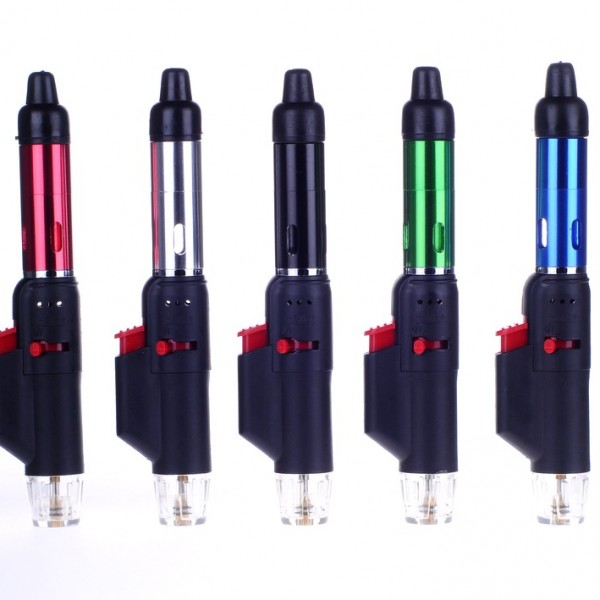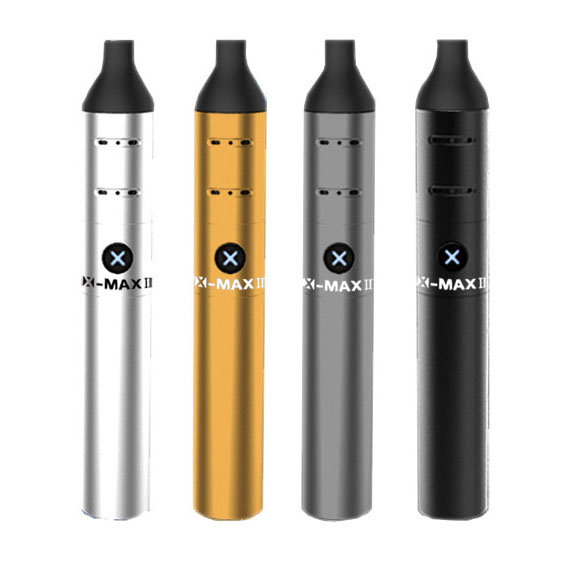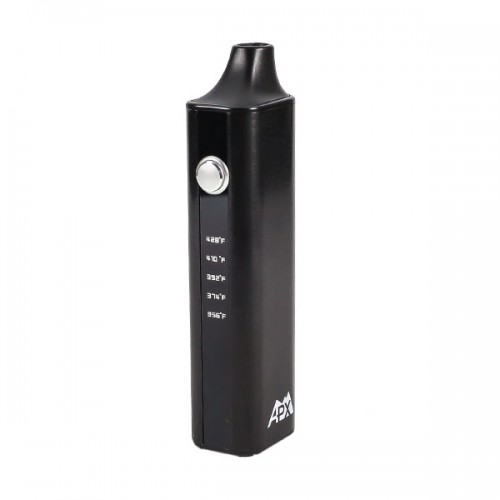Let’s Discuss Conduction vs Convection Vaporizing
Convection and conduction are two methods of heating and enjoying herbs, waxes, and liquids. In this article we will discuss the differences between conduction and convection vaporizing, and the pros and cons associated with both
What is Conduction Vaporizing?
Conduction vaporizing occurs when heat is transferred through direct contact. In other words, conduction vaping is when you have direct contact from the dry herb. Direct contact creates smoke, which is counterintuitive for vaping because you want to create vapor. These are usually vape pen models which have flat circular coils that look like “@”. Think of this as heating up food in a pan. The pan itself is in direct contact with the heat, so the pan is going through a conduction heating process.
Many vape pens come with the option of purchasing a glass screen. The glass screen has several holes in it and rests on top of your coil. This helps the herbs not touch the coil directly, so you can turn many herbal vape pens into semi-convection vapes. Many complaints about dry herb vaporizers are that conductive vaporizer coils often break. They either short circuit or stop working because the herbs keep pressing on them. However, using a dual use vape as a wax vaporizer is usually fine if it’s not burning too hot or too low. You have to test it out with concentrates because it might not be efficient enough to give you the right amount of vapor. Most wax vape pens use conduction heating since the herbs sit directly on the coil.
Conduction Vaping Pros:
- Quick toke
- Stealthy vape pens
- Easier to use
- Heat up instantly
Conduction Vaping Cons:
- Create smoke
- Smell more than usual
- Small herbal chamber
- Coils often break
What is Convection Vaporizing?
Convection vaporizing occurs when heat is transferred through a liquid or gas. In this case, the hot air passing through the herbs in the oven chamber is the gas. When you grind up your herbs into the herbal chamber and activate the vape pen, the active ingredients in the herbs turn into vapor. For cannabis, active ingredients like THC, CBD, and other cannabinoids turn into vapor. This way you do not burn the whole leaf when you don’t need to and you conserve more. In this case, water in a kettle is a great example because the water isn’t touching the fire directly. The kettle is getting heated, so the water inside it is being heated up. Most weed vaporizer companies have realized that users are learning the difference and are heading towards products that offer true vaporization.
Convection Vaping Pros:
- Conserve more herbs
- True vaporization
- Healthier than smoking
- More advanced vaporizers
- Easier cleanup process
Convection Vaping Cons:
- A bit pricier
- Take a little longer to heat up
Top 3 Conduction Vaporizers
Ago G5 Vaporizer
One of the most sold convection vaporizers is the Ago G5 because it is a dual-use vaporizer. This means that you can use it as a wax vaporizer as well as for dried herbs in one unit. It comes with a 900mAh battery, which is on the bigger side for vape pens. The threading is a 510-threading connection and the charger is a USB. The cool part about this vape pen is that the battery has an LCD display which tells you exactly how many puffs you’ve taken off this device and how much battery life is left. Heat up time for the coil is about 3-4 seconds.

G Slim Herbal Vaporizer
The G Slim Herbal Vaporizer is probably the smallest vape pen made for weed. It comes with a 1-year warranty and a conduction coil that heats up instantly. It stands at 6.25 inches, with a .25-inch diameter, and weighs 0.10lbs, so it is pretty small and portable. It fits in any pocket or purse. The threading is a 510 thread, so it’s pretty universal. It doesn’t have a big chamber, so you must pack it really well and grind it up pretty fine. This will help ensure an even heat distribution throughout the chamber.

Click-n-Vape Butane Vaporizer
The Click-n-Vape is a different dry herb vaporizer compared to the others we have reviewed because it is powered by butane, rather than an electronic unit. You fill the butane from the bottom and place your ground herbs on top, where they sit on a screen. When activated, the butane turns into a flame that directly heats the dry herbs. Unfortunately, the flame is so close that it burns the herbs. However, it is a good sneak-a-toke vaporizer that can be used quickly. It even has a lever to increase or decrease the flame. It measures about 5.2 inches and has a diameter of about half an inch.

Top 3 Convection Vaporizers
X Max V2 Pro
The X Max V2 Pro is one of the leading vaporizers when it comes to technological features. Not many devices can call themselves a triple use vaporizer but this can. Triple use means that you can use it for herbs, liquids oils and as a wax vaporizer. No need to switch out any chambers or anything. For liquid oils and waxes, simply put the screen in and for herbs, just fill it in the chamber. It also comes with 5 heat temperature settings that you can toggle through. The temperature ranges from 356°F to 374°F to 392°F to 410°F to 428°F. It stands at 6.5 inches with a diameter of .75 inches.

PAX 2 Vaporizer
PAX is actually one of the most well-known vaporizer manufacturer companies in the dry herb community. It has a solid line up that came out with a sequel. Another temperature controlled vape that ranges the temperatures from 360°, 380°, 400° and 420°F. It is much lighter and more efficient with a polished finish. One of the most technologically advanced features belongs on this vape which is the lip-sensing technology. This recognizes your lips on the mouthpiece and activates the weed vaporizer to start heating your chamber. The chamber is deep enough for about .3 grams of herbs and a 90 minute to 2-hour battery life per charge.

Pulsar APX Herbal Vaporizer
The Pulsar APX looked a bit different than others that we have reviewed but this one is still pretty efficient. It comes with a 1600mAh lithium ion battery that lasts about 2 hours per charge. It has a temperature controlled setting that ranges from 356°F, 374°F, 392°F, 410°F to 428°F. The chamber has a ceramic bowl with a stainless steel base. It takes about 40 seconds to fully heat up and shows the battery level, in case it gets low and needs to be recharged. The case is very sturdy and held together by epoxy casing to make sure it is held together really well.

In conclusion…
Choosing between conduction and convection vaporizers basically comes down to the vaping experience you prefer. If you are new to vaping your choice might be the easier to use conduction vaporizer models. Whereas if you’re an experienced with vaping, with a more complex palate you would mostly likely be quite pleased with a convection vaporizer.








1 Response
[…] methods of heating to know about. Convection and conduction sound alike but are very different. Convection vaping is when the dry herbs don’t touch the heating coil of your vape. Conduction heating is when the […]